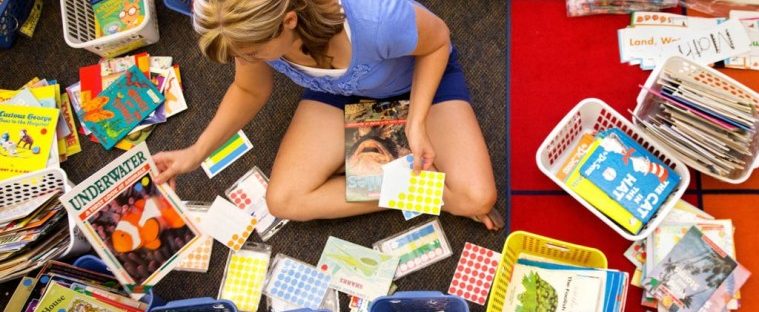According to the U.S. Product Consumer Safety Commission, 5,062 children sought medical treatment for backpack injuries in 2017, including a number of injuries caused by bags exceeding 40 percent of a child's body weight. Still, parents can help their kids stay safe and comfortable with just a few precautions. Distribute Weight Evenly. Load heaviest items … Continue reading Picking the Perfect Backpack Size for Your Child
Teacher Spend Hundreds out of Pocket on School Supplies
Parents aren’t the only ones who spend big on back-to-school supplies. Thousands of teachers around the United States offset their school supply budgets by forking over close to $600 of their own money just for the most basic of supplies. Some of the most sought-after items include staples, copy paper, holiday decorations and colored pencils, … Continue reading Teacher Spend Hundreds out of Pocket on School Supplies
School Supply Costs Continue to Rise
From backpacks to binders, to USB drives and glue sticks, the rising cost of school supplies is putting a definite pinch on the average families’ budget. When families are simply unable to choose between the grocery bill and the school supply list, it's our children that suffer, often creating a class system in our public … Continue reading School Supply Costs Continue to Rise
Samples to Sales: Five Crucial Rules to Master Product Sampling in a Digital Age
Product sampling is getting smarter, more personal, and measurable. Here are five crucial rules to master sampling in a digital age. Full article here: https://www.ana.net/magazines/show/id/ana-2018-02-rules-for-product-sampling-in-digital-age
DollarDays on “Talk Business 360” TV
https://vimeo.com/249431653 Full video here: http://talkbusiness360.com/dollardays/
DollarDays Announces the 2017 Partner of the Year Awards
DollarDays, an online wholesale marketplace, is pleased to present the winners of its 17th Annual Partner of the Year Awards, an initiative that recognizes outstanding partner achievements across three prestigious categories - excellence, product innovation and supply chain support. “We are incredibly thrilled to once again celebrate our partners and their continued dedication to providing incredible … Continue reading DollarDays Announces the 2017 Partner of the Year Awards
Internet Retailer Announces the Finalists for the 2017 Internet Retailer Excellence Awards
Internet Retailer, the world’s leading publisher of strategic e-commerce business intelligence, and B2B E-commerce World, today announced the finalists for the categories of the third-annual Internet Retailer Excellence Awards. The awards recognize the outstanding achievements made by innovative online retailers and business-to-business (B2B) e-commerce companies in the past year. Internet Retailer and B2B E-commerce World … Continue reading Internet Retailer Announces the Finalists for the 2017 Internet Retailer Excellence Awards
Preparing Your Business for the Cold Weather Ahead
The weather has been turning quickly, as temperatures across the United States are plummeting. For businesses of all types and sizes, wintertime brings about a lot of changes to store policies, hours, maintenance and inventory. It’s good to begin prepping your business now so you’re fully prepared for all that winter brings. 1. Prepare Your … Continue reading Preparing Your Business for the Cold Weather Ahead
Random Acts of Kindness Define Who We Really Are
Watching the news, watching the divisiveness caused by the elections and watching interactions in our daily lives, we realize we are living in very scary times—[a]nd everything we see and experience is amplified in the eyes of our children. Children learn by watching adults. According to Love to Know, babies and toddlers learn by observing … Continue reading Random Acts of Kindness Define Who We Really Are
A Nation Built by Refugees
Today, the number of displaced people in the world is at its highest level ever, according to CNN. We have surpassed World War ll numbers, when the world was dealing with the most devastating event in history. [Approximately] 65.3 million people are away from their home today, [or] one out of every 113. [...] Anyone … Continue reading A Nation Built by Refugees




